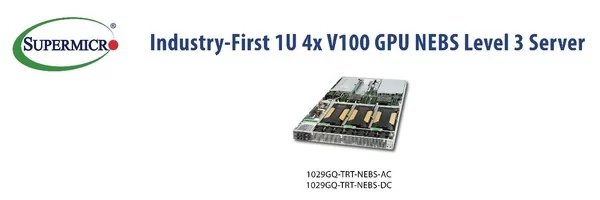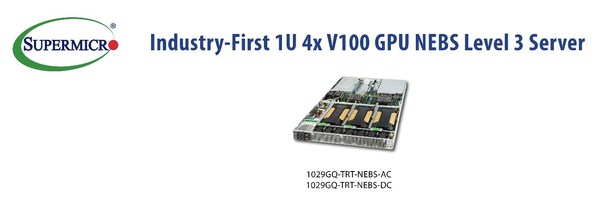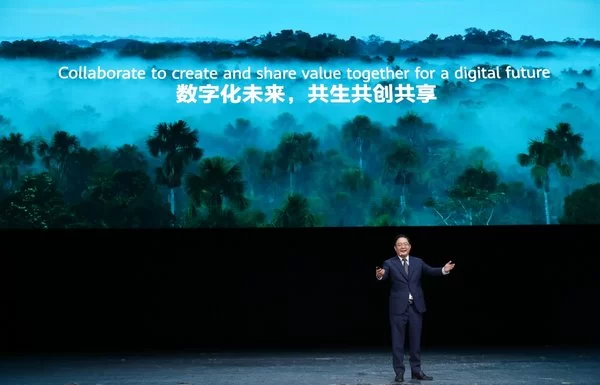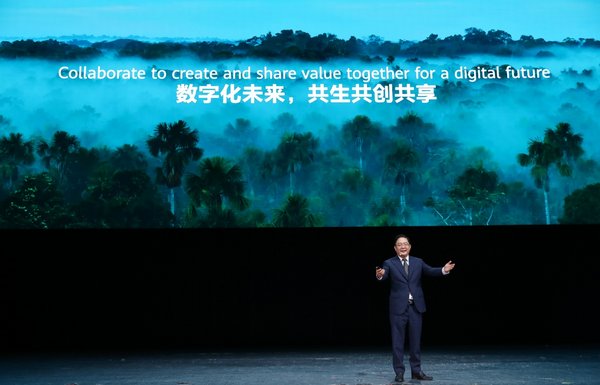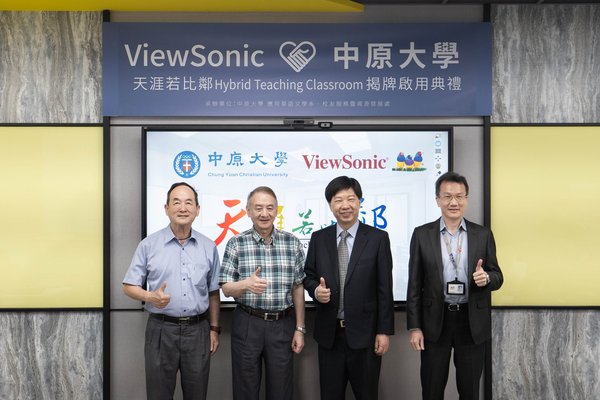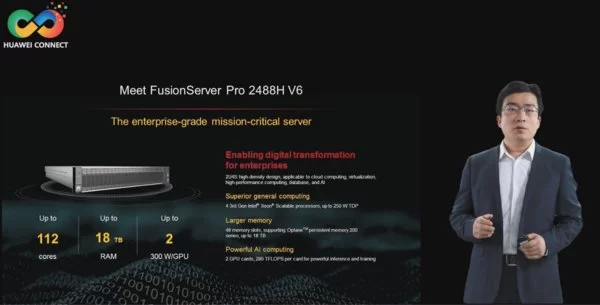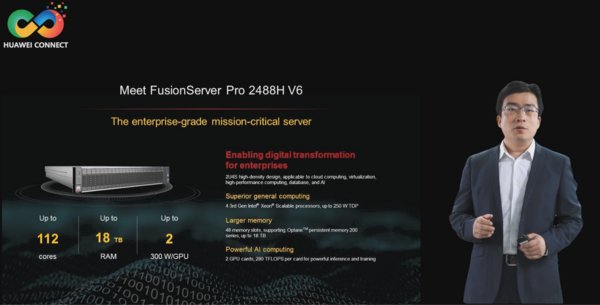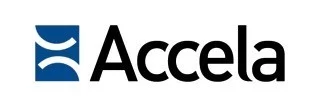SHANGRAO, China, Sept. 23, 2020 — JinkoSolar Holding Co., Ltd. ("JinkoSolar" or the "Company") (NYSE: JKS), one of the largest and most innovative solar module manufacturers in the world, today announced its unaudited financial results for the second quarter ended June 30, 2020.
Strategic Business Updates
- Module shipments in the second quarter increased significantly compared with the first quarter, despite the negative impact caused by the global pandemic.
- Large-area N-Type monocrystalline silicon solar cell reached a record high efficiency of 24.79%.
- Demand and deployment of large-size modules exceeded expectations. The company recently launched its Tiger Pro N-type large-size module products with maximum power output of up to 610 W.
- Industry consolidation is accelerating due to increased competition in a challenging economic environment. Module shipments of the top five module manufacturers are expected to account for 65% to 70% of the total shipments in the industry this year.
- Announced the plan to list the Company’s principal operating subsidiary Jiangxi Jinko on the Shanghai Stock Exchange’s Sci-Tech innovation board, or the STAR Market.
Second Quarter 2020 Operational and Financial Highlights
- Total solar module shipments were 4,469 megawatts ("MW"), within JinkoSolar’s guidance range of 4.2 GW to 4.5 GW, an increase of 31.0% from 3,411 MW in the first quarter of 2020 and an increase of 32.0% from 3,386 MW in the second quarter of 2019.
- Total revenues were RMB8.45 billion (US$1.20 billion), exceeding JinkoSolar’s guidance range of US$1.10 billion to US$1.18 billion; a decrease of 0.4% from the first quarter of 2020 and an increase of 22.2% from the second quarter of 2019.
- Gross margin was 17.9%, within JinkoSolar’s guidance range of 16.0% to 18.0%, compared with 19.5% in the first quarter of 2020 and 16.5% in the second quarter of 2019.
- Income from operations was RMB434.7 million (US$61.5 million), compared with RMB732.7 million in the first quarter of 2020 and RMB260.3 million in the second quarter of 2019.
- Net income attributable to the Company’s ordinary shareholders was RMB318.0 million (US$45.0 million) in the second quarter of 2020, compared with RMB282.4 million in the first quarter of 2020 and RMB125.4 million in the second quarter of 2019.
- Diluted earnings per American depositary share ("ADS") were RMB6.55 (US$0.93) in the second quarter of 2020.
- Non-GAAP net income attributable to the Company’s ordinary shareholders in the second quarter of 2020 was RMB376.1 million (US$53.2 million), compared with RMB227.5 million in the first quarter of 2020 and RMB202.9 million in the second quarter of 2019.
- Non-GAAP basic and diluted earnings per ADS were RMB8.46 (US$1.20) in the second quarter of 2020, compared with RMB5.09 and RMB4.59, respectively, in the first quarter of 2020 and RMB4.87 for both in the second quarter of 2019.
Mr. Kangping Chen, JinkoSolar’s Chief Executive Officer commented, "JinkoSolar delivered a strong quarter with total revenue exceeding guidance. Despite the tough economic environment around the world, total solar module shipments and gross margin for the quarter were all within our guidance range. Module shipments hit a new high of 4,469 MW, an increase of 31.0% sequentially and 32.0% year-over-year. Total revenues during the quarter were US$1.20 billion, an increase of 16.0% (excluding the impact from disposal of the solar power plants in the first quarter of 2020) sequentially and 22.2% year-over-year, while gross profit was US$214.1 million. We expect orders for the third and fourth quarters to increase, with total solar module shipments expected to be in the range between 5 GW to 5.3 GW for the third quarter, and our guidance for total shipments for the full year 2020 remains unchanged at 18GW to 20 GW."
"Solar demand decreased during the quarter due to the economic slowdown, triggering a drop in module prices. Many upstream manufacturing companies were forced to reduce inventory and companies lacking product differentiation and cost flexibility struggled to remain competitive. The market continues to consolidate due to the challenging economic environment and strong competition within the industry, while the production capacity and infrastructure of integrated manufacturers remain resilient to risks and price fluctuations. All of the above has enabled a few key players, including JinkoSolar, to increase global market share. Overall, the combined shipment volumes of the top five solar module manufacturers are expected to account for 65% to 70% of the industry for the year."
"More than ever, technology is the major differentiating factor giving companies with integrated applications a clear advantage. Recently, our large-area N-type monocrystalline silicon solar cells reached a conversion efficiency of 24.79%, setting a new world record. This year, the popularity of large-sized bifacial modules exceeded our expectations and demonstrated that further reductions in the levelized cost of energy for solar remains the core distinction among clean energies. Additionally, we expect new technologies in energy storage to prompt the sector into a new era of rapid development."
"As economies have started to rebound in many markets, we believe global demand will eventually accelerate and we are well positioned to benefit from the momentum. Earlier this year, the shortage of supply in the Chinese market drove up prices along the supply chain, but prices have stabilized since then and we expect strong market demand to continue until the end of the year. With our strong R&D platform, expanding capacity and cost leadership, we believe we are well positioned to capitalize on the strong potential of solar energy as governments increasingly focus on clean energy in the wake of the pandemic and growing climate change challenges."
"This week, we announced our plan to list our principal operating subsidiary Jiangxi Jinko on the Shanghai Stock Exchange’s Sci-Tech innovation board, or the STAR Market. We are committed to maintaining the New York Stock Exchange listing for JinkoSolar. We believe the additional listing of Jiangxi Jinko on the STAR Market will raise our profile with investors both in China and globally and provide us with additional growth opportunities in the future."
Second Quarter 2020 Financial Results
Total Revenues
Total revenues in the second quarter of 2020 were RMB8.45 billion (US$1.20 billion), a decrease of 0.4% from RMB8.48 billion in the first quarter of 2020 and an increase of 22.2% from RMB6.91 billion in the second quarter of 2019. Excluding the impact from the disposal of two solar power plants in Mexico in the first quarter of 2020, revenue increased by 16.0% from RMB7.29 billion in the first quarter of 2020. The sequential increase (excluding the impact from disposal of the solar power plants in the first quarter of 2020) was mainly attributable to an increase in the shipment of solar modules partially offset by a decline in the average selling price of solar modules. The year-over-year increase was mainly attributable to the increase in shipment of solar modules.
Gross Profit and Gross Margin
Gross profit in the second quarter of 2020 was RMB1.51 billion (US$214.1 million), compared with RMB1.66 billion in the first quarter of 2020 (or RMB1.44 billion if excluding the impact from the disposal of two solar power plants in Mexico) and RMB1.14 billion in the second quarter of 2019. The sequential increase was mainly attributable to an increase in the shipment of solar modules partially offset by a decline in the average selling price of solar modules. The year-over-year increase was mainly attributable to (i) an increase in the shipment of solar modules, (ii) an increase in self-produced production volume that is increasingly shifting toward integrated mono-based high-efficiency products capacity, and (iii) the continued reduction of integrated production costs resulting from the Company’s industry-leading integrated cost structure.
Gross margin was 17.9% in the second quarter of 2020, compared with 19.5% in the first quarter of 2020 (or 19.7% if excluding the impact from the disposal of two solar power plants in Mexico) and 16.5% in the second quarter of 2019.The sequential decrease was mainly attributable to a decline in the average selling price of solar modules due to the decrease of global demand of solar modules. The year-over-year increase was mainly attributable to (i) an increase in self-produced production volume by increasing shift toward integrated mono-based high-efficiency products capacity, and (ii) the continued reduction of integrated production costs resulting from the Company’s industry-leading integrated cost structure.
Income from Operations and Operating Margin
Income from operations in the second quarter of 2020 was RMB434.7 million (US$61.5 million), compared with RMB732.7 million in the first quarter of 2020 (including RMB213.2 million from the disposal of two solar power plants in Mexico) and RMB260.3 million in the second quarter of 2019.
Operating margin was 5.1% in the second quarter of 2020, compared with 8.6% in the first quarter of 2020 (or 7.1% if excluding the impact from the disposal of two solar power plants in Mexico) and 3.8% in the second quarter of 2019.
Total operating expenses in the second quarter of 2020 were RMB1.08 billion (US$152.6 million), an increase of 16.7% from RMB924.2 million in the first quarter of 2020 and an increase of 22.0% from RMB883.6 million in the second quarter of 2019. The sequential increase was mainly due to (i) an increase in warranty cost in relation to the increase in the shipment of solar modules. and (ii) an increase in disposal loss on property, plant and equipment due to the automation upgrade of the Company. The year-over-year increase was mainly due to (i) an increase in shipping costs and warranty cost in relation to the increase in the shipment of solar modules and (ii) an increase in disposal loss on property, plant and equipment.
Total operating expenses accounted for 12.8% of total revenues in the second quarter of 2020, compared to 10.9% in the first quarter of 2020 (or 12.6% if excluding the impact from the disposal of two solar power plants in Mexico) and 12.8% in the second quarter of 2019.
Interest Expense, Net
Net interest expense in the second quarter of 2020 was RMB106.2 million (US$15.0 million), a decrease of 2.2% from RMB108.6 million in the first quarter of 2020 and a decrease of 9.0% from RMB116.8 million in the second quarter of 2019. The sequential and year-over-year decreases were mainly due to an increase in interest income partially offset by an increase in interest expense with the increase of interest-bearing debts.
Exchange Gain and Change in Fair Value of Foreign Exchange Derivatives
The Company recorded a net exchange gain (including change in fair value of foreign exchange derivatives) of RMB69.7 million (US$9.9 million) in the second quarter of 2020, compared to a net exchange loss of RMB106.8 million in the first quarter of 2020 and a net exchange gain of RMB45.9 million in the second quarter of 2019.
Change in Fair Value of Interest Rate Swap
The Company entered into Interest Rate Swap agreements with several banks for the purpose of reducing interest rate risk exposure associated with the Company’s overseas solar power projects. After the disposal of two solar power projects in Mexico in the first quarter of 2020, there was no change in fair value of interest rate swap recognized in the second quarter of 2020.
Change in Fair Value of Convertible Senior Notes and Call Option
The Company issued US$85.0 million of 4.5% convertible senior notes due 2024 (the "Notes") in May 2019 and has elected to measure the Notes at fair value. The Company recognized a loss from a change in fair value of the Notes of RMB89.2 million (US$12.6 million) in the second quarter of 2020, compared to a gain of RMB166.2 million in the first quarter of 2020. The change was primarily due to an increase in the Company’s stock price in the second quarter of 2020.
Concurrent with the issuance of the Notes in May 2019, the Company entered into a call option transaction with an affiliate of Credit Suisse Securities (USA) LLC. The Company accounted for the call option transaction as freestanding derivative assets in its consolidated balance sheets, which is marked to market during each reporting period. The Company recorded a gain from a change in fair value of the call option of RMB38.0 million (US$5.4 million) in the second quarter of 2020, compared to a loss of RMB100.2 million in the first quarter of 2020. The change was primarily due to an increase in the Company’s stock price in the second quarter of 2020.
Equity in (Loss)/Gain of Affiliated Companies
The Company indirectly holds a 20% equity interest in Sweihan PV Power Company P.J.S.C, a developer and operator of solar power projects in Dubai, and accounts for its investment using the equity method. The Company also holds a 30% equity interest in Jiangsu Jinko-Tiansheng Co., Ltd, which processes and assembles PV modules as an OEM manufacturer, and accounts for its investments using the equity method. The Company recorded equity in gain of affiliated companies of RMB4.2 million (US$0.6 million) in the second quarter of 2020, compared with a loss of RMB101.5 million in the first quarter of 2020 and a loss of RMB28.6 million in the second quarter of 2019. The gain primarily arose from revenue generated from operations in the second quarter of 2020. The sequential change was mainly due to the decreased losses arose from change in fair value of interest rate swap agreements purchased by Sweihan PV Power Company P.J.S.C. as the long-term interest rates remains stable in the second quarter of 2020. Hedge accounting was not applied for the derivative.
Income Tax (Expenses)/Benefit
The Company recorded an income tax expense of RMB22.8 million (US$3.2 million) in the second quarter of 2020, compared with an income tax expense of RMB109.5 million in the first quarter of 2020 and an income tax benefit of RMB55.9 million in the second quarter of 2019. The sequential decrease was mainly due to additional 2019 income tax deduction for R&D costs approved by the local tax bureau in the second quarter of 2020. The year-over-year change was mainly due to higher profit generated compared to the second quarter of 2019.
Net Income and Earnings per Share
Net income attributable to the Company’s ordinary shareholders was RMB318.0 million (US$45.0 million) in the second quarter of 2020, compared with RMB282.4 million in the first quarter of 2020 and RMB125.4 million in the second quarter of 2019.
Basic and diluted earnings per ordinary share were RMB1.79 (US$0.25) and RMB1.64 (US$0.23), respectively, during the second quarter of 2020. This translates into basic and diluted earnings per ADS of RMB7.16 (US$1.01) and RMB6.55 (US$0.93), respectively.
Non-GAAP net income attributable to the Company’s ordinary shareholders in the second quarter of 2020 was RMB376.1 million (US$53.2 million), compared with RMB227.5 million in the first quarter of 2020 and RMB202.9 million in the second quarter of 2019.
Non-GAAP basic and diluted earnings per ordinary share were RMB2.12 (US$0.30), during the second quarter of 2020. This translates into non-GAAP basic and diluted earnings per ADS of RMB8.46 (US$1.20).
Financial Position
As of June 30, 2020, the Company had RMB6.85 billion (US$969.6 million) in cash and cash equivalents and restricted cash, compared with RMB4.74 billion as of March 31, 2020.
As of June 30, 2020, the Company’s accounts receivables due from third parties were RMB5.90 billion (US$834.6 million), compared with RMB5.31 billion as of March 31, 2020.
As of June 30, 2020, the Company’s inventories were RMB6.89 billion (US$975.1 million), compared with RMB7.15 billion as of March 31, 2020.
As of June 30, 2020, the Company’s total interest-bearing debts were RMB16.5 billion (US$2.34 billion), of which RMB908.6 million (US$128.6 million) was related to the Company’s overseas downstream solar projects, compared with RMB12.79 billion, of which RMB1.15 billion was related to the Company’s overseas downstream solar projects as of March 31, 2020.
Second Quarter 2020 Operational Highlights
Solar Module Shipments
Total solar module shipments in the second quarter of 2020 were 4,469 MW.
Solar Products Production Capacity
As of June 30, 2020, the Company’s in-house annual mono wafer, solar cell and solar module production capacity was 20 GW, [1] 11GW (10.2 GW for PERC cells and 800 MW for N type cells) and 25 GW, respectively.
|
Note 1:
In addition to the mono wafer, our multi wafer production capacity was 3.5 GW as of June 30, 2020[1]
|
Operations and Business Outlook
Strong market demand is expected to continue until the end of the year. COVID-19 has negatively impacted demand and caused substantial challenges across the supply chain, which is expected to further accelerate market consolidation within the industry. The penetration of large-size modules exceed expectations.
Third Quarter and Full Year 2020 Guidance
The Company’s business outlook is based on management’s current views and estimates with respect to market conditions, production capacity, the Company’s order book and the global economic environment. This outlook is subject to uncertainty on final customer demand and sale schedules. Management’s views and estimates are subject to change without notice.
For the third quarter of 2020, the Company expects total solar module shipments to be in the range of 5.0 GW to 5.3 GW. Total revenue for the third quarter is expected to be in the range of US$1.22 billion to US$1.30 billion. Gross margin for the third quarter is expected to be between 17% and 19%.
For full year 2020, the Company estimates total solar module shipments to be in the range of 18 GW to 20 GW.
Solar Products Production Capacity
JinkoSolar expects its annual mono wafer, solar cell and solar module production capacity to reach 20 GW, 11 GW (including 800 MW N-type cells) and 30 GW, respectively, by the end of 2020.
Recent Business Developments
- In June 2020, JinkoSolar’s innovative Tiger Pro Series of high-efficiency modules received the world’s first IEC 61701 Ed. 3 (FDIS) certification for salt mist corrosion test issued by TÜV Nord AG, an independent provider of technical services for testing, inspection, certification, consultation and training.
- In June 2020, United States International Trade Commission ("ITC") issued a favorable final determination concluding that JinkoSolar’s products do not infringe a patent asserted by Hanwha Q CELLS.
- In June 2020, JinkoSolar appointed Mr. Ji Shao Guo as Chief Human Resources Officer.
- In June 2020, JinkoSolar responded to the Regional Court of Düsseldorf’s recent determination concluding that third-party cell technology contained in certain JinkoSolar modules, no longer in production, infringes a patent held by Hanwha Q CELLS.
- In June 2020, JinkoSolar announced that it will supply 60.9 MW of bifacial modules for the first industrial hybrid plant in Chile.
- In July 2020, JinkoSolar won the 6th All Quality Matters Award for PV Module Energy Yield Simulation (Mono Group) at the Solar Congress 2020 organized by TÜV Rheinland.
- In July 2020, JinkoSolar announced supply of 126 MW of solar modules for the expansion of an existing 160 MW solar PV park in Chile.
- In July 2020, the maximum solar conversion efficiency of JinkoSolar’s large-area N-type monocrystalline silicon solar cells reached 24.79%, and have set a world record for large-size contact-passivated solar cells.
- In August 2020, JinkoSolar unveiled its RE100 roadmap by providing details on its approach to achieve 100% capacity powered by renewables by 2025.
- In August 2020, JinkoSolar launched its new generation of 610W Tiger Pro high-efficiency monocrystalline TR solar module and its BIPV solutions, Building Integrated Photovoltaics product series, which will be unveiled at SNEC 2020 in Shanghai.
Conference Call Information
JinkoSolar’s management will host an earnings conference call on Wednesday, September 23, 2020 at 8:00 a.m. U.S. Eastern Time (8:00 p.m. Beijing / Hong Kong the same day).
Dial-in details for the earnings conference call are as follows:
|
Hong Kong / International:
|
+852 3027 6500
|
|
|
U.S. Toll Free:
|
+1 855-824-5644
|
|
|
Passcode:
|
55345060
|
|
|
|
|
Please dial in 10 minutes before the call is scheduled to begin and provide the passcode to join the call.
A telephone replay of the call will be available 2 hours after the conclusion of the conference call through 23:59 U.S. Eastern Time, September 30, 2020. The dial-in details for the replay are as follows:
|
International:
|
+61 2 8325 2405
|
|
|
U.S.:
|
+1 646 982 0473
|
|
|
Passcode:
|
319337163#
|
|
|
|
|
Additionally, a live and archived webcast of the conference call will be available on the Investor Relations section of JinkoSolar’s website at www.jinkosolar.com.
About JinkoSolar Holding Co., Ltd.
JinkoSolar (NYSE: JKS) is one of the largest and most innovative solar module manufacturers in the world. JinkoSolar distributes its solar products and sells its solutions and services to a diversified international utility, commercial and residential customer base in China, the United States, Japan, Germany, the United Kingdom, Chile, South Africa, India, Mexico, Brazil, the United Arab Emirates, Italy, Spain, France, Belgium, and other countries and regions. JinkoSolar has built a vertically integrated solar product value chain, with an integrated annual capacity of 20 GW for mono wafers, 11 GW for solar cells, and 25 GW for solar modules, as of June 30, 2020.
JinkoSolar has 7 productions facilities globally, 14 overseas subsidiaries in Japan, South Korea, Vietnam, India, Turkey, Germany, Italy, Switzerland, United States, Mexico, Brazil, Chile and Australia, and global sales teams in China, United Kingdom, France, Spain, Bulgaria, Greece, Ukraine, Jordan, Saudi Arabia, Tunisia, Morocco, Kenya, South Africa, Costa Rica, Colombia, Panama, Kazakhstan, Malaysia, Myanmar, Sri Lanka, Thailand, Vietnam, Poland and Argentina.
To find out more, please see: www.jinkosolar.com
Use of Non-GAAP Financial Measures
To supplement its consolidated financial results presented in accordance with United States Generally Accepted Accounting Principles ("GAAP"), JinkoSolar uses certain non-GAAP financial measures including, non-GAAP net income, non-GAAP earnings per Share, and non-GAAP earnings per ADS, which are adjusted from the comparable GAAP results to exclude certain expenses or incremental ordinary shares relating to share-based compensation convertible senior notes and call option:
- Non-GAAP net income is adjusted to exclude the expenses relating to issuance cost of convertible senior notes, change in fair value of convertible senior notes and call option, interest expenses of convertible senior notes and call option, exchange (gain)/loss on the convertible senior notes and call option, and stock-based compensation (benefit)/expense; given these Non-GAAP net income adjustments above are either related to the Company or its subsidiaries incorporated in Cayman Islands, which are not subject to tax exposures, or related to those subsidiaries with tax loss positions which result in no tax impacts, therefore no tax adjustment is needed in conjunction with these Non-GAAP net income adjustments; and
- Non-GAAP earnings per share and non-GAAP earnings per ADS are adjusted to exclude the expenses relating to issuance cost of convertible senior notes, change in fair value of convertible senior notes and call option, interest expenses of convertible senior notes and call option, exchange gain on the convertible senior notes and call option, and stock-based compensation. As the Non-GAAP net income is adjusted to exclude the change in fair value of call option, the dilutive impact of call option, if any, is also excluded from the denominator for the calculation of Non-GAAP earnings per share and non-GAAP earnings per ADS.
The Company believes that the use of non-GAAP information is useful for analysts and investors to evaluate JinkoSolar’s current and future performances based on a more meaningful comparison of net income and diluted net income per ADS when compared with its peers and historical results from prior periods. These measures are not intended to represent or substitute numbers as measured under GAAP. The submission of non-GAAP numbers is voluntary and should be reviewed together with GAAP results.
Impact of the Recently Adopted Major Accounting Pronouncement
The Company adopted the update of ASU No. 2016-13, Financial Instruments – Credit Losses (Topic 326): "Measurement of Credit Losses on Financial Instruments" on January 1, 2020.
Upon adoption of ASC 326 on January 1, 2020, the Company used the modified retrospective transition method through a RMB6.6 million cumulative-effect increase to retained earnings, among which RMB30.9 million was related to the decrease of allowance for accounts receivables-third parties, RMB15.0 million was related to the increase of allowance for accounts receivables- related parties and RMB9.3 million was related to the increase of allowance for other receivables and other current/non-current assets. The adoption of the new guidance did not have a material impact to the Company’s consolidated financial statements.
Currency Convenience Translation
The conversion of Renminbi into U.S. dollars in this release, made solely for the convenience of the readers, is based on the noon buying rate in the city of New York for cable transfers of Renminbi as certified for customs purposes by the Federal Reserve Bank of New York as of June 30, 2020, which was RMB7.0651 to US$1.00. No representation is intended to imply that the Renminbi amounts could have been, or could be, converted, realized, or settled into U.S. dollars at that rate or any other rate. The percentages stated in this press release are calculated based on Renminbi.
Safe-Harbor Statement
This press release contains forward-looking statements. These statements constitute "forward-looking" statements within the meaning of Section 27A of the Securities Act of 1933, as amended, and Section 21E of the Securities Exchange Act of 1934, as amended, and as defined in the U.S. Private Securities Litigation Reform Act of 1995. These forward-looking statements can be identified by terminology such as "will," "expects," "anticipates," "future," "intends, "plans," "believes," "estimates" and similar statements. Among other things, the quotations from management in this press release and the Company’s operations and business outlook, contain forward-looking statements. Such statements involve certain risks and uncertainties that could cause actual results to differ materially from those in the forward-looking statements. Further information regarding these and other risks is included in JinkoSolar’s filings with the U.S. Securities and Exchange Commission, including its annual report on Form 20-F. Except as required by law, the Company does not undertake any obligation to update any forward-looking statements, whether as a result of new information, future events or otherwise.
For investor and media inquiries, please contact:
In China:
Ripple Zhang
JinkoSolar Holding Co., Ltd.
Tel: +86 21-5183-3105
Email: ir@jinkosolar.com
Rene Vanguestaine
Christensen
Tel: + 86 178 1749 0483
Email: rvanguestaine@ChristensenIR.com
In the U.S.:
Ms. Linda Bergkamp
Christensen
Tel: +1-480-614-3004
Email: lbergkamp@ChristensenIR.com
|
JINKOSOLAR HOLDING CO., LTD.
|
|
UNAUDITED CONDENSED CONSOLIDATED STATEMENTS OF OPERATIONS
|
|
(in thousands, except ADS and Share data)
|
|
|
For the quarter ended
|
|
For the six months ended
|
|
June 30, 2019
|
|
March 31, 2020
|
|
June 30, 2020
|
|
June 30, 2019
|
|
June 30, 2020
|
|
RMB
|
|
RMB
|
|
RMB
|
|
USD
|
|
RMB
|
|
RMB
|
|
USD
|
|
Revenues from third parties
|
6,912,301
|
|
8,431,213
|
|
8,448,719
|
|
1,195,839
|
|
12,589,528
|
|
16,879,932
|
|
2,389,199
|
|
|
|
|
|
|
|
|
|
|
|
|
|
|
|
Revenues from related parties
|
725
|
|
52,710
|
|
1,943
|
|
275
|
|
145,546
|
|
54,653
|
|
7,736
|
|
|
|
|
|
|
|
|
|
|
|
|
|
|
|
Total revenues
|
6,913,026
|
|
8,483,923
|
|
8,450,662
|
|
1,196,114
|
|
12,735,074
|
|
16,934,585
|
|
2,396,935
|
|
|
|
|
|
|
|
|
|
|
|
|
|
|
|
Cost of revenues
|
(5,769,143)
|
|
(6,827,045)
|
|
(6,937,720)
|
|
(981,971)
|
|
(10,626,854)
|
|
(13,764,765)
|
|
(1,948,276)
|
|
|
|
|
|
|
|
|
|
|
|
|
|
|
|
Gross profit
|
1,143,883
|
|
1,656,878
|
|
1,512,942
|
|
214,143
|
|
2,108,220
|
|
3,169,820
|
|
448,659
|
|
|
|
|
|
|
|
|
|
|
|
|
|
|
|
Operating expenses:
|
|
|
|
|
|
|
|
|
|
|
|
|
|
|
Selling and marketing
|
(561,959)
|
|
(613,821)
|
|
(709,189)
|
|
(100,379)
|
|
(1,021,273)
|
|
(1,323,010)
|
|
(187,260)
|
|
General and administrative
|
(248,376)
|
|
(238,594)
|
|
(294,452)
|
|
(41,677)
|
|
(440,278)
|
|
(533,046)
|
|
(75,448)
|
|
Research and development
|
(73,258)
|
|
(71,784)
|
|
(74,643)
|
|
(10,565)
|
|
(150,636)
|
|
(146,427)
|
|
(20,725)
|
|
Total operating expenses
|
(883,593)
|
|
(924,199)
|
|
(1,078,284)
|
|
(152,621)
|
|
(1,612,187)
|
|
(2,002,483)
|
|
(283,433)
|
|
|
|
|
|
|
|
|
|
|
|
|
|
|
|
Income from operations
|
260,290
|
|
732,679
|
|
434,658
|
|
61,522
|
|
496,033
|
|
1,167,337
|
|
165,226
|
|
Interest expenses, net
|
(116,754)
|
|
(108,613)
|
|
(106,239)
|
|
(15,037)
|
|
(212,864)
|
|
(214,852)
|
|
(30,410)
|
|
Subsidy income
|
10,517
|
|
5,061
|
|
14,379
|
|
2,035
|
|
15,258
|
|
19,440
|
|
2,752
|
|
Exchange gain
|
87,487
|
|
10,951
|
|
51,616
|
|
7,306
|
|
6,507
|
|
62,567
|
|
8,856
|
|
Change in fair value of interest rate swap
|
(46,118)
|
|
(78,878)
|
|
–
|
|
–
|
|
(76,317)
|
|
(78,878)
|
|
(11,164)
|
|
Change in fair value of foreign exchange derivatives
|
(41,619)
|
|
(117,787)
|
|
18,133
|
|
2,567
|
|
(23,505)
|
|
(99,654)
|
|
(14,105)
|
|
Convertible senior notes issuance costs
|
(18,646)
|
|
–
|
|
–
|
|
–
|
|
(18,646)
|
|
–
|
|
–
|
|
Change in fair value of convertible senior notes and call option
|
(45,070)
|
|
65,990
|
|
(51,165)
|
|
(7,242)
|
|
(45,070)
|
|
14,825
|
|
2,098
|
|
Other income/(expense), net
|
7,302
|
|
(2,187)
|
|
2,127
|
|
301
|
|
14,700
|
|
(60)
|
|
(8)
|
|
Income before income taxes
|
97,389
|
|
507,216
|
|
363,509
|
|
51,452
|
|
156,096
|
|
870,725
|
|
123,245
|
|
Income tax benefit/(expense)
|
55,917
|
|
(109,520)
|
|
(22,754)
|
|
(3,221)
|
|
60,167
|
|
(132,274)
|
|
(18,722)
|
|
Equity in (loss)/gain of affiliated companies
|
(28,621)
|
|
(101,527)
|
|
4,211
|
|
596
|
|
(52,330)
|
|
(97,316)
|
|
(13,774)
|
|
Net income
|
124,685
|
|
296,169
|
|
344,966
|
|
48,827
|
|
163,933
|
|
641,135
|
|
90,749
|
|
Less: Net (loss)/income attributable to non-controlling
interests
|
(725)
|
|
13,728
|
|
26,923
|
|
3,811
|
|
(1,664)
|
|
40,651
|
|
5,754
|
|
Net income attributable to JinkoSolar
Holding Co., Ltd.’s ordinary shareholders
|
125,410
|
|
282,441
|
|
318,043
|
|
45,016
|
|
165,597
|
|
600,484
|
|
84,995
|
|
|
|
|
|
|
|
|
|
|
|
|
|
|
|
Net income attributable to JinkoSolar Holding Co., Ltd.’s
ordinary shareholders per share:
|
|
|
|
|
|
|
|
|
|
|
|
|
|
|
Basic
|
0.75
|
|
1.58
|
|
1.79
|
|
0.25
|
|
1.02
|
|
3.37
|
|
0.48
|
|
Diluted
|
0.32
|
|
0.67
|
|
1.64
|
|
0.23
|
|
0.57
|
|
2.77
|
|
0.39
|
|
|
|
|
|
|
|
|
|
|
|
|
|
|
|
Net income attributable to JinkoSolar Holding Co., Ltd.’s
ordinary shareholders per ADS:
|
|
|
|
|
|
|
|
|
|
|
|
|
|
|
Basic
|
3.01
|
|
6.32
|
|
7.16
|
|
1.01
|
|
4.10
|
|
13.48
|
|
1.91
|
|
Diluted
|
1.26
|
|
2.67
|
|
6.55
|
|
0.93
|
|
2.28
|
|
11.08
|
|
1.57
|
|
|
|
|
|
|
|
|
|
|
|
|
|
|
|
Weighted average ordinary shares outstanding:
|
|
|
|
|
|
|
|
|
|
|
|
|
|
|
Basic
|
166,605,808
|
|
178,743,903
|
|
177,718,162
|
|
177,718,162
|
|
161,670,693
|
|
178,231,033
|
|
178,231,033
|
|
Diluted
|
165,385,410
|
|
198,081,276
|
|
170,989,776
|
|
170,989,776
|
|
161,633,544
|
|
197,139,692
|
|
197,139,692
|
|
|
|
|
|
|
|
|
|
|
|
|
|
|
|
Weighted average ADS outstanding:
|
|
|
|
|
|
|
|
|
|
|
|
|
|
|
Basic
|
41,651,452
|
|
44,685,976
|
|
44,429,541
|
|
44,429,541
|
|
40,417,673
|
|
44,557,758
|
|
44,557,758
|
|
Diluted
|
41,346,352
|
|
49,520,319
|
|
42,747,444
|
|
42,747,444
|
|
40,408,386
|
|
49,284,923
|
|
49,284,923
|
|
|
|
|
|
|
|
|
|
|
|
|
|
|
|
UNAUDITED CONDENSED CONSOLIDATED STATEMENT OF COMPREHENSIVE INCOME
|
|
|
|
|
|
|
|
|
|
|
|
|
|
|
|
Net income
|
124,685
|
|
296,169
|
|
344,966
|
|
48,827
|
|
163,933
|
|
641,135
|
|
90,749
|
|
Other comprehensive income/(loss):
|
|
|
|
|
|
|
|
|
|
|
|
|
|
|
-Foreign currency translation adjustments
|
48,233
|
|
45,040
|
|
30,442
|
|
4,309
|
|
30,774
|
|
75,482
|
|
10,684
|
|
-Change in the instrument-specific credit risk
|
5,546
|
|
39,202
|
|
(52,681)
|
|
(7,457)
|
|
5,546
|
|
(13,479)
|
|
(1,908)
|
|
Comprehensive income
|
178,464
|
|
380,411
|
|
322,727
|
|
45,679
|
|
200,253
|
|
703,138
|
|
99,525
|
|
Less: Comprehensive (loss)/income attributable to non-controlling
interests
|
(725)
|
|
13,728
|
|
26,923
|
|
3,811
|
|
(1,664)
|
|
40,651
|
|
5,754
|
|
Comprehensive income attributable to JinkoSolar Holding Co., Ltd.’s
ordinary shareholders
|
179,189
|
|
366,683
|
|
295,804
|
|
41,868
|
|
201,917
|
|
662,487
|
|
93,771
|
|
|
|
|
|
|
|
|
|
|
|
|
|
|
|
Reconciliation of GAAP and non-GAAP Results
|
|
|
|
|
|
|
|
|
|
|
|
|
|
|
|
|
|
|
|
|
|
|
|
|
|
|
|
|
1. Non-GAAP earnings per share and non-GAAP earnings per ADS
|
|
|
|
|
|
|
|
|
|
|
|
|
|
|
|
|
|
|
|
|
|
|
|
|
|
|
|
|
GAAP net income attributable to ordinary shareholders
|
125,410
|
|
282,441
|
|
318,043
|
|
45,016
|
|
165,597
|
|
600,484
|
|
84,995
|
|
|
|
|
|
|
|
|
|
|
|
|
|
|
|
Convertible senior notes issuance costs
|
18,646
|
|
–
|
|
–
|
|
–
|
|
18,646
|
|
–
|
|
–
|
|
|
|
|
|
|
|
|
|
|
|
|
|
|
|
Change in fair value of convertible senior notes and call option
|
45,070
|
|
(65,990)
|
|
51,165
|
|
7,242
|
|
45,070
|
|
(14,825)
|
|
(2,098)
|
|
|
|
|
|
|
|
|
|
|
|
|
|
|
|
Net interest expenses of convertible senior notes and call option
|
2,914
|
|
6,128
|
|
6,734
|
|
953
|
|
2,914
|
|
12,862
|
|
1,820
|
|
|
|
|
|
|
|
|
|
|
|
|
|
|
|
Exchange (gain)/loss on convertible senior notes and call option
|
(721)
|
|
4,664
|
|
(291)
|
|
(41)
|
|
(721)
|
|
4,373
|
|
619
|
|
|
|
|
|
|
|
|
|
|
|
|
|
|
|
Stock-based compensation expense
|
11,587
|
|
249
|
|
423
|
|
60
|
|
4,663
|
|
672
|
|
95
|
|
|
|
|
|
|
|
|
|
|
|
|
|
|
|
Non-GAAP net income attributable to ordinary shareholders
|
202,906
|
|
227,492
|
|
376,074
|
|
53,230
|
|
236,169
|
|
603,566
|
|
85,431
|
|
|
|
|
|
|
|
|
|
|
|
|
|
|
|
Non-GAAP earnings per share attributable to ordinary shareholders –
|
|
|
|
|
|
|
|
|
|
|
|
|
|
|
Basic
|
1.22
|
|
1.27
|
|
2.12
|
|
0.30
|
|
1.461
|
|
3.39
|
|
0.48
|
|
Diluted
|
1.22
|
|
1.15
|
|
2.12
|
|
0.30
|
|
1.461
|
|
3.06
|
|
0.43
|
|
|
|
|
|
|
|
|
|
|
|
|
|
|
|
Non-GAAP earnings per ADS attributable to ordinary shareholders –
|
|
|
|
|
|
|
|
|
|
|
|
|
|
|
Basic
|
4.87
|
|
5.09
|
|
8.46
|
|
1.20
|
|
5.84
|
|
13.54
|
|
1.92
|
|
Diluted
|
4.87
|
|
4.59
|
|
8.46
|
|
1.20
|
|
5.84
|
|
12.25
|
|
1.73
|
|
|
|
|
|
|
|
|
|
|
|
|
|
|
|
Non-GAAP weighted average ordinary shares outstanding
|
|
|
|
|
|
|
|
|
|
|
|
|
|
|
Basic
|
166,605,808
|
|
178,743,903
|
|
177,718,162
|
|
177,718,162
|
|
161,670,693
|
|
178,231,033
|
|
178,231,033
|
|
Diluted
|
166,605,808
|
|
198,081,276
|
|
177,718,162
|
|
177,718,162
|
|
161,670,693
|
|
197,139,692
|
|
197,139,692
|
|
|
|
|
|
|
|
|
|
|
|
|
|
|
|
Non-GAAP weighted average ADS outstanding
|
|
|
|
|
|
|
|
|
|
|
|
|
|
|
Basic
|
41,651,452
|
|
44,685,976
|
|
44,429,541
|
|
44,429,541
|
|
40,417,673
|
|
44,557,758
|
|
44,557,758
|
|
Diluted
|
41,651,452
|
|
49,520,319
|
|
44,429,541
|
|
44,429,541
|
|
40,417,673
|
|
49,284,923
|
|
49,284,923
|
|
JINKOSOLAR HOLDING CO., LTD.
|
|
UNAUDITED CONDENSED CONSOLIDATED BALANCE SHEETS
|
|
(in thousands)
|
|
|
December 31,
2019
|
|
June 30, 2020
|
|
RMB
|
|
RMB
|
|
USD
|
|
ASSETS
|
|
|
|
|
|
|
Current assets:
|
|
|
|
|
|
|
Cash and cash equivalents
|
5,653,854
|
|
6,256,894
|
|
885,606
|
|
Restricted cash
|
576,546
|
|
593,580
|
|
84,016
|
|
Restricted short-term investments
|
6,930,502
|
|
6,351,495
|
|
898,996
|
|
Accounts receivable, net – related parties
|
520,504
|
|
457,227
|
|
64,716
|
|
Accounts receivable, net – third parties
|
5,266,351
|
|
5,896,205
|
|
834,554
|
|
Notes receivable, net – related parties
|
18,629
|
|
38,629
|
|
5,468
|
|
Notes receivable, net – third parties
|
1,529,801
|
|
2,069,340
|
|
292,896
|
|
Advances to suppliers, net – third parties
|
2,522,373
|
|
2,131,005
|
|
301,624
|
|
Inventories, net
|
5,818,789
|
|
6,889,268
|
|
975,113
|
|
Forward contract receivables
|
52,281
|
|
997
|
|
141
|
|
Prepayments and other current assets, net – related parties
|
54,318
|
|
35,630
|
|
5,043
|
|
Prepayments and other current assets, net
|
1,573,482
|
|
1,570,550
|
|
222,297
|
|
Held-for-sale assets
|
1,170,818
|
|
–
|
|
–
|
|
Total current assets
|
31,688,248
|
|
32,290,820
|
|
4,570,470
|
|
|
|
|
|
|
|
Non-current assets:
|
|
|
|
|
|
|
Restricted cash
|
531,158
|
|
922,353
|
|
130,551
|
|
Accounts receivable, net – third parties
|
–
|
|
28,020
|
|
3,966
|
|
Project Assets
|
798,243
|
|
806,474
|
|
114,149
|
|
Long-term investments
|
278,021
|
|
163,442
|
|
23,134
|
|
Property, plant and equipment, net
|
10,208,205
|
|
11,336,560
|
|
1,604,586
|
|
Land use rights, net
|
597,922
|
|
721,113
|
|
102,067
|
|
Intangible assets, net
|
36,395
|
|
38,234
|
|
5,412
|
|
Financing lease right-of-use assets, net
|
1,259,713
|
|
975,047
|
|
138,009
|
|
Operating lease right-of-use assets, net
|
317,904
|
|
276,781
|
|
39,176
|
|
Deferred tax assets
|
271,286
|
|
271,286
|
|
38,398
|
|
Call Option-concurrent with issuance of convertible
senior notes
|
294,178
|
|
235,084
|
|
33,274
|
|
Other assets, net – related parties
|
96,753
|
|
99,296
|
|
14,054
|
|
Other assets, net – third parties
|
1,466,692
|
|
1,437,186
|
|
203,421
|
|
Total non-current assets
|
16,156,470
|
|
17,310,876
|
|
2,450,197
|
|
|
|
|
|
|
|
Total assets
|
47,844,718
|
|
49,601,696
|
|
7,020,667
|
|
|
|
|
|
|
|
LIABILITIES
|
|
|
|
|
|
|
Current liabilities:
|
|
|
|
|
|
|
Accounts payable – related parties
|
36,310
|
|
20,473
|
|
2,898
|
|
Accounts payable – third parties
|
4,952,630
|
|
4,619,921
|
|
653,907
|
|
Notes payable – third parties
|
7,518,570
|
|
6,857,544
|
|
970,622
|
|
Accrued payroll and welfare expenses
|
879,465
|
|
793,927
|
|
112,373
|
|
Advances from related parties
|
749
|
|
–
|
|
–
|
|
Advances from third parties
|
4,350,380
|
|
2,380,763
|
|
336,975
|
|
Income tax payable
|
117,422
|
|
78,598
|
|
11,125
|
|
Other payables and accruals
|
3,055,928
|
|
3,296,258
|
|
466,560
|
|
Other payables due to related parties
|
13,127
|
|
14,633
|
|
2,070
|
|
Forward contract payables
|
3,857
|
|
37,716
|
|
5,338
|
|
Convertible senior notes – current
|
–
|
|
634,256
|
|
89,773
|
|
Financing lease liabilities – current
|
227,613
|
|
219,428
|
|
31,058
|
|
Operating lease liabilities – current
|
40,043
|
|
40,532
|
|
5,737
|
|
Short-term borrowings from third parties,
including current portion of long-term bank
borrowings
|
9,047,250
|
|
12,066,725
|
|
1,707,934
|
|
Guarantee liabilities to related parties
|
25,688
|
|
23,363
|
|
3,307
|
|
Held-for-sale liabilities
|
1,008,196
|
|
–
|
|
–
|
|
Total current liabilities
|
31,277,228
|
|
31,084,137
|
|
4,399,677
|
|
|
|
|
|
|
|
Non-current liabilities:
|
|
|
|
|
|
|
Long-term borrowings
|
1,586,187
|
|
2,831,051
|
|
400,709
|
|
Convertible senior notes
|
728,216
|
|
–
|
|
–
|
|
Accrued warranty costs – non current
|
651,968
|
|
703,747
|
|
99,609
|
|
Financing lease liabilities
|
583,491
|
|
471,138
|
|
66,685
|
|
Operating lease liabilities
|
279,534
|
|
236,566
|
|
33,484
|
|
Deferred tax liability
|
250,734
|
|
250,734
|
|
35,489
|
|
Guarantee liabilities to related parties
– non current
|
46,332
|
|
41,109
|
|
5,819
|
|
Total non-current liabilities
|
4,126,462
|
|
4,534,345
|
|
641,795
|
|
|
|
|
|
|
|
Total liabilities
|
35,403,690
|
|
35,618,482
|
|
5,041,472
|
|
|
|
|
|
|
|
SHAREHOLDERS’ EQUITY
|
|
|
|
|
|
|
Ordinary shares (US$0.00002 par value, 500,000,000
shares authorized, 180,653,497 and 180,829,497 shares
issued as of December 31, 2019 and June 30, 2020,
respectively)
|
25
|
|
25
|
|
4
|
|
Additional paid-in capital
|
4,582,850
|
|
4,587,584
|
|
649,330
|
|
Statutory reserves
|
689,707
|
|
689,707
|
|
97,622
|
|
Accumulated other comprehensive income
|
62,952
|
|
124,955
|
|
17,686
|
|
Treasury stock, at cost; 1,723,200 and 2,945,840 ordinary
shares as of December 31, 2019 and June 30, 2020,
respectively
|
(13,876)
|
|
(43,170)
|
|
(6,110)
|
|
Accumulated retained earnings
|
3,981,661
|
|
4,588,753
|
|
649,495
|
|
|
|
|
|
|
|
Total JinkoSolar Holding Co., Ltd. shareholders’ equity
|
9,303,319
|
|
9,947,854
|
|
1,408,027
|
|
|
|
|
|
|
|
Non-controlling interests
|
3,137,709
|
|
4,035,360
|
|
571,168
|
|
|
|
|
|
|
|
Total liabilities and shareholders’ equity
|
47,844,718
|
|
49,601,696
|
|
7,020,667
|
Related Links :
http://www.jinkosolar.com


